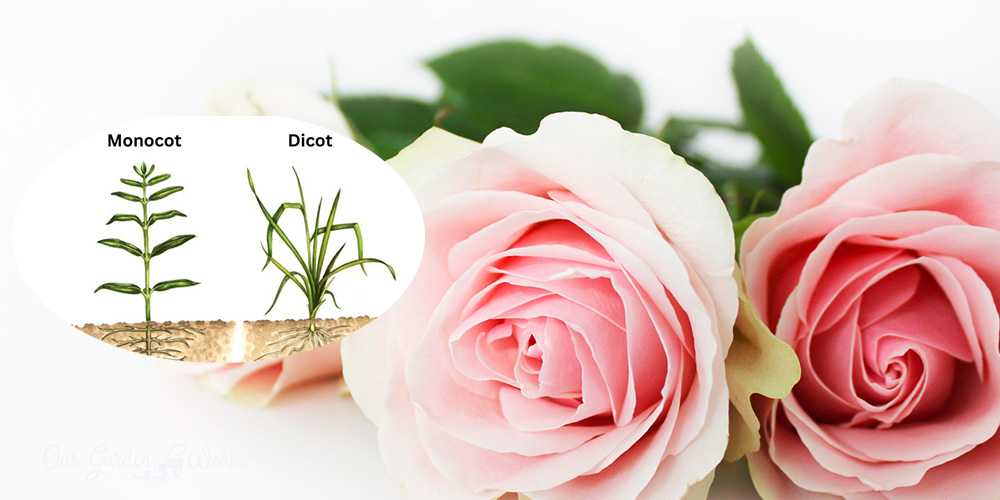Being passionate about gardening can lead you into a rabbit hole of scientific terms and plant classification. One of which is identifying flowering plants through their cotyledons, namely monocot and dicot. As a rose grower, you’re probably wondering, is rose dicot or monocot?
In this post, we will introduce you to the features of monocot and dicot and where roses belong between the two.
Though it’s easy just to admire the beauty of plants and love the act of growing them, identifying their unique qualities comes with great benefits. These include:
- A better understanding of how plants work.
- Aids in quick identification of new plant species.
- A profound appreciation of plants.
- An essential factor during cross-breeding.
Level up your gardening prowess by starting with monocots.
(You could use the table of contents below to jump to the sections that are most important to you.)
What is a monocot?
Monocot or monocotyledon is a plant classification where the seed only develops one cotyledon.
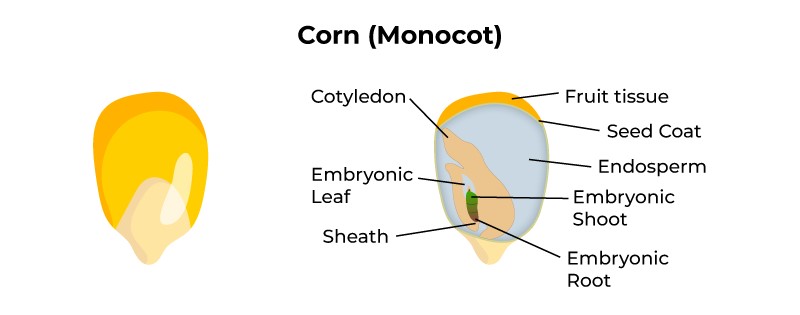
Cotyledon is the first leaf that emerges from the seed during the germination period. Plant species that are classified as monocots are grass and flowering plants with grass-like features.
Since seeds are often sown underground, it can be hard to just wait for them to grow before you recognize their classification.
As the plant grows and gets established, there are several features that can help you identify its classification. These qualities are found in the leaf growth, a number of petals on its flowers, vascular veins, and its roots.
What is a dicot?
Dicot or dicotyledon refers to plants with two cotyledons or embryonic leaves. Dicot plants have broad leaves and flowers with more parts.
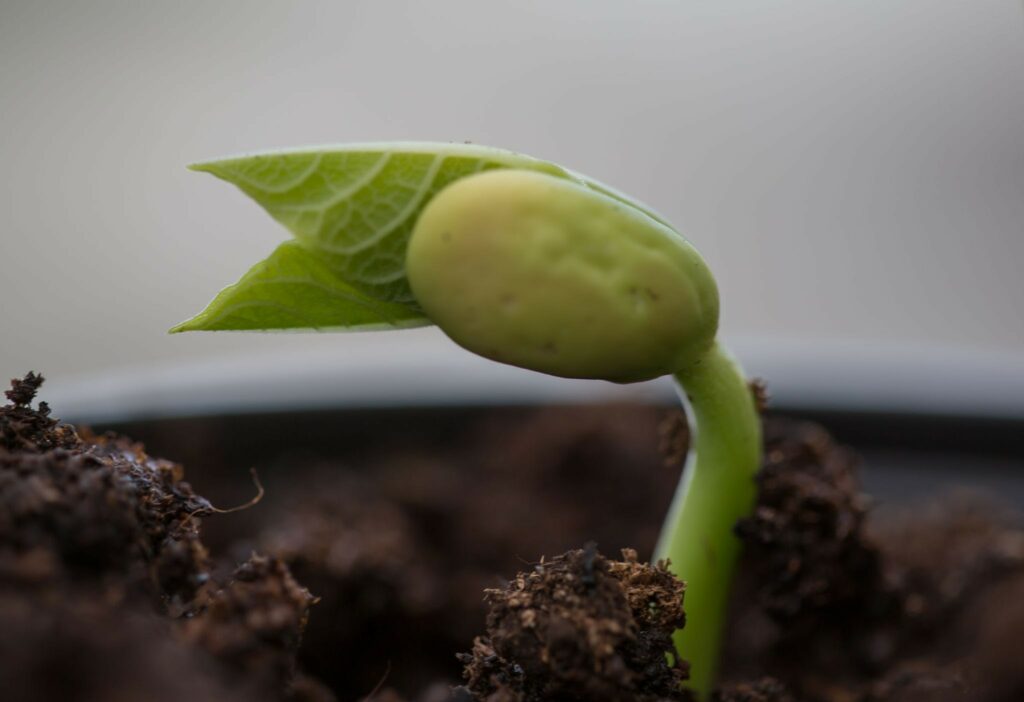
Compared to the grass-like growth of monocots, dicots have a unique set of features like broad leaves and flowers with more parts.
There are around 2,000 species of dicots. Most of which are the ones that are very common in gardens and farms. Both trees and plants can be dicots. The perfect examples are oak trees, beans, mango trees, sycamore trees, and tomatoes.
What are The Differences Between Monocot and Dicot?
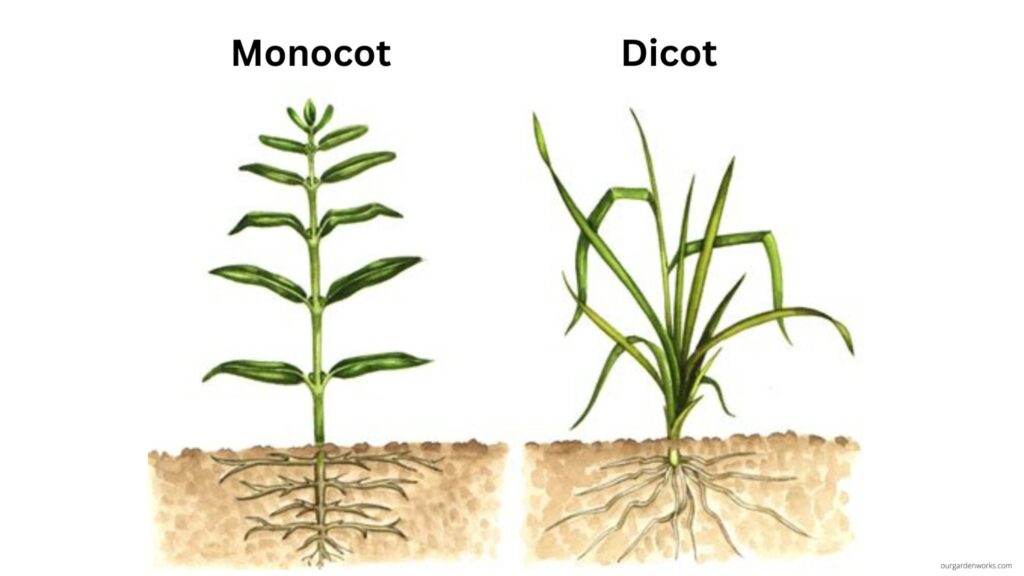
Checking the seeds of plants is not enough to identify if they are monocot or dicot. So, the best way to check their identity is through the following features:
Roots
The roots are the first plant part that emerges from the seed during germination. As soon as they grow, you can already see the difference between the dicot and monocot.
Monocots have fibrous roots that spread in all directions horizontally. You will notice these root spread in monocot trees like palm trees where they have so many same-sized roots.
Dicots have a tap root system that grows deep in the soil in a vertical direction. New roots will branch out from the tap root that will eventually help the plant grow better.
Stem vascular tissues
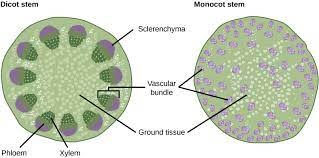
Monocots and dicots develop their stems differently through the arrangement of vascular veins.
Vascular veins are responsible for sending nutrients and moisture throughout the plant. Monocots have a unique sporadic or scattered tissue arrangement while dicots have a more organized donut-like tissue arrangement.
Leaves
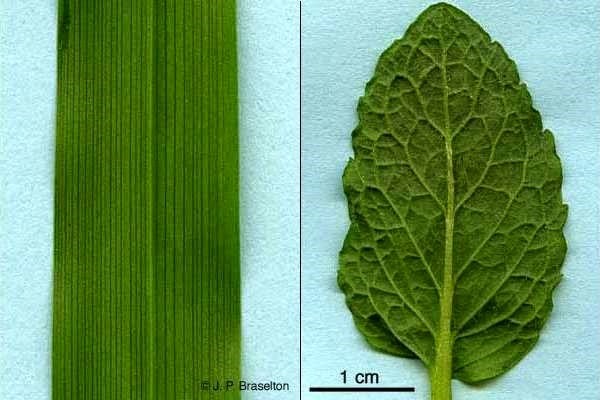
Probably the most noticeable distinction of monocots versus dicots lies on their leaves.
Monocots are grass-like plants so the leaves are usually long and grow in a horizontal direction. Whereas, dicots grow wide and in various shapes.
Some monocot plants may look like a dicot but the best sign to know is by checking out the veins on the leaves.
Leaf veins
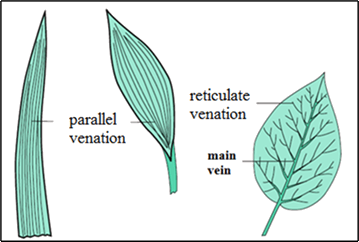
The leaf veins are the next best hint next to leaf structure in identifying the classification of the plant. Monocot has parallel leaf veins or parallel venation that look very organized while dicot has a more palmate vein arrangement or reticulate venation.
The veins of dicot leaves are more branched out and go in every different direction, which is probably the easiest giveaway about their classification.
Flowers
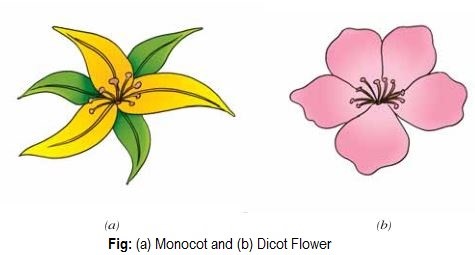
The number of petals of the flowers can also tell if a plant is a monocot or dicot.
Monocot plants have flowers with only three flower parts while dicot flowers have more than three flower parts. The perfect examples of a monocot with distinctive three parts are corns and tulips.
Growth rings
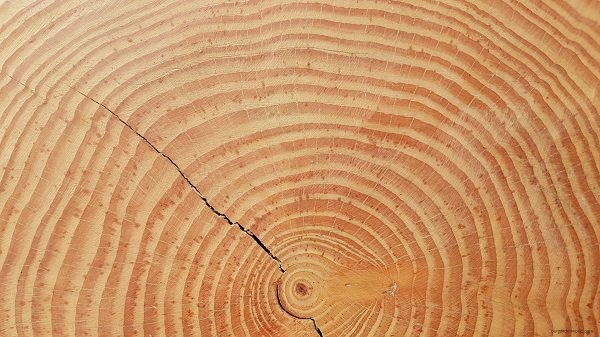
Plant classifications are not only limited to plants and shrubs but also to trees. Dicot trees grow new tissues between the bark and the wood called cambium, creating layers of tissues or growth rings as they build up the trunk diameter.
You don’t have to cut a dicot tree to see the growth rings. Cutting a piece of its stem will show you the same growth rings that you can find in the trunk. Monocot trees like palms have no growth rings and no capacity to grow stems.
Based on the differences between monocot and dicot, you now have an idea of what to check when identifying roses.
Q: Is Rose Dicot or Monocot?
Rose is a shrub that belongs to the dicot classification of plants. Its roots, leaf structure, leaf veins, and flowers giveaway signs that it is a dicot. Let’s take a closer look at each part of this popular shrub.
Leaf structure and leaf veins: The leaves of roses are wide with toothed edges. The veins are also spread in a reticular manner like other dicot plants. Its leaves are far from the elongated leaf structure or grass-like features of monocot foliage.

Roots: Roses have thick fibrous roots that spread horizontally in the ground. As they mature, new branches of roots grow from the first set of roots. When the rose is established, the first batch of roots will thicken up to a quarter of an inch.
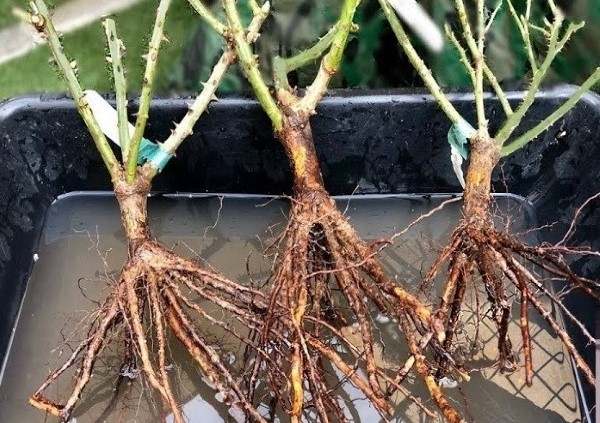
Flowers: Roses produce one of the most beautiful flowers. Each flower has seven parts which prove it’s a true dicot. These parts include:
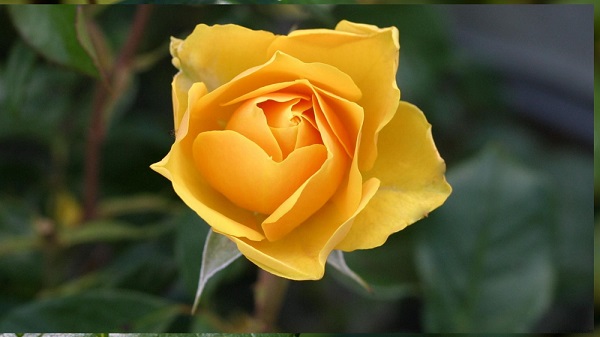
- Stigma
- Style
- Ovary
- Filament
- Anther
- Sepal
- Petal
Identifying plants based on flowers alone can be tricky. It can be easy to think that monocots have three or fewer petals. However, monocots like lilies have six petals with three parts. So, it’s not the number of petals that you should check but plant parts.
Lilies may have six petals but the flower only contains three parts, namely: stamen, tepal, and anthers.
Grafting: Limitations of monocots
One particular benefit of knowing whether a plant is a monocot or dicot is to know if you can graft them.
Grafting is a propagation technique where you expose a branch or stem of a plant to another tissue from another plant variety to grow new roots and be another plant on its own.
Based on the vascular arrangement of monocots, they don’t develop a cambium or a layer of tissue suitable for grafting. The propagation methods that can only work for monocots are cuttings and seeds.
Luckily, roses are a dicot plant and can be propagated through grafting.
How to graft and air layer roses

Grafting is a common propagation method that allows roses to develop better disease resistance and achieve a multi-colored rose bush.
Before you start cutting stems and all, timing is crucial when grafting plants because it must be done when the plant has a lot of sap flowing through its stems. The best time to graft roses is during mid-summer around July or August.
You should also water the rootstock or the rose where you’ll perform the graft the night before the grafting day. The moisture buildup in the plant will prevent the bark from drying out fast when you graft it.
Here’s how you can graft your roses and grow multiple rose bushes from one plant:
Materials:
- Sharp knife or cutter.
- Pruning shears.
- String or tape.
- Grafting box.
- Rubber band.
- Plastic sheet.
- Alcohol or soapy water.
Grafting directions:
There are a couple of terms that you’ll encounter during this grafting procedure.
First is the scion which pertains to the piece of plant tissue from the flowering part of a plant that you will graft to a rootstock of another plant.
Rootstock is a stem of a plant where you will attach or graft the scion from another plant. The first step in grafting is to pick a good scion from the plant that you want to be grafted to another rose.
(1) The scion or bud is the flowering part of the rose plant. Sometimes it’s called the bud eye. Look for it on the nodes of the rose plants.
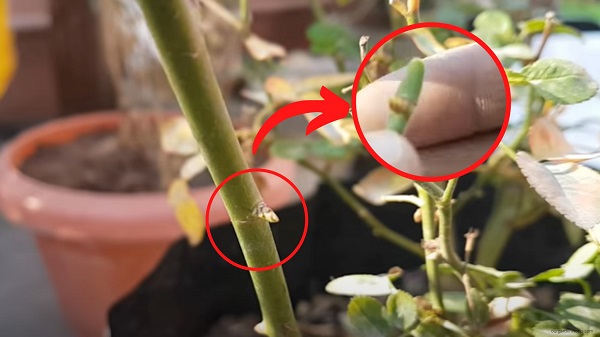
Make sure to remove some thorns so you won’t cut yourself. You only need a tiny piece like in the image above.
(2) The next step is to prepare the rootstock. One popular rootstock for roses is Dr. Huey. Look for a healthy internode where you make a T-cut using a box cutter. Make sure to sanitize the blade with alcohol or soapy water to avoid fungal diseases.
On the lower part of the T-cut, try to lift the skin to create space for the scion.
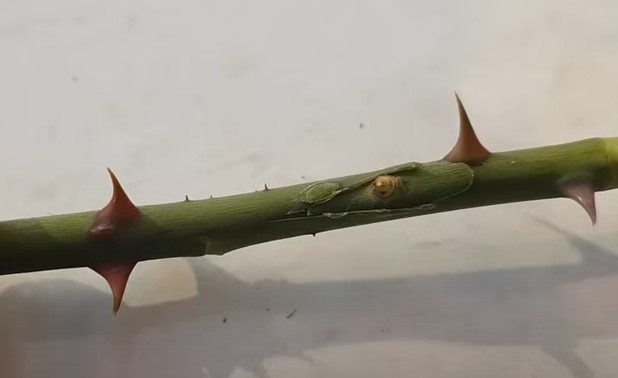
The scion must be snuggled by the skin so that the tissue will attach properly to the cambium.
Remove extra thorns if you don’t want to be cut but you can also leave them in the stem if you want to avoid fungal diseases.
(3) Tie the two grafted parts together using tape or a tie. Keep the scion or bud eye exposed because it will be the one that will grow when the grafting is successful.
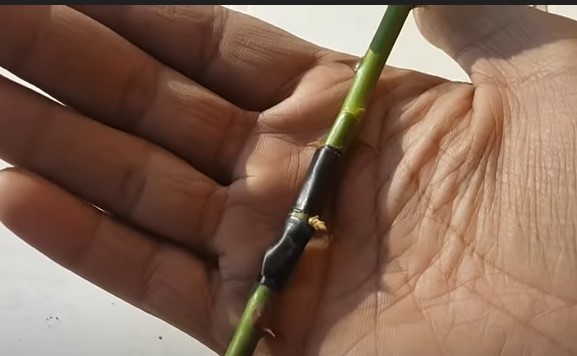
Make sure that you tie the graft properly to prevent water and air in the grafted part.
Air layering directions:
Air layering is a process wherein you expose the cambium of a dicot and surround it with soil to develop new roots.
This is a propagation technique that allows you to cut several plants from a single mother plant.
(1) If you want the grafted part of your rose to become a part of another plant, you can air layer the lower part of the stem to grow above-ground roots. The first step is to expose the cambium by removing the bark around two inches.
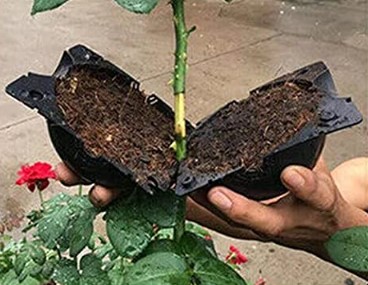
(2) Place a grafting box around it and fill it with soil or potting mix. Fill both ends of the grafting box and close it and lock it.
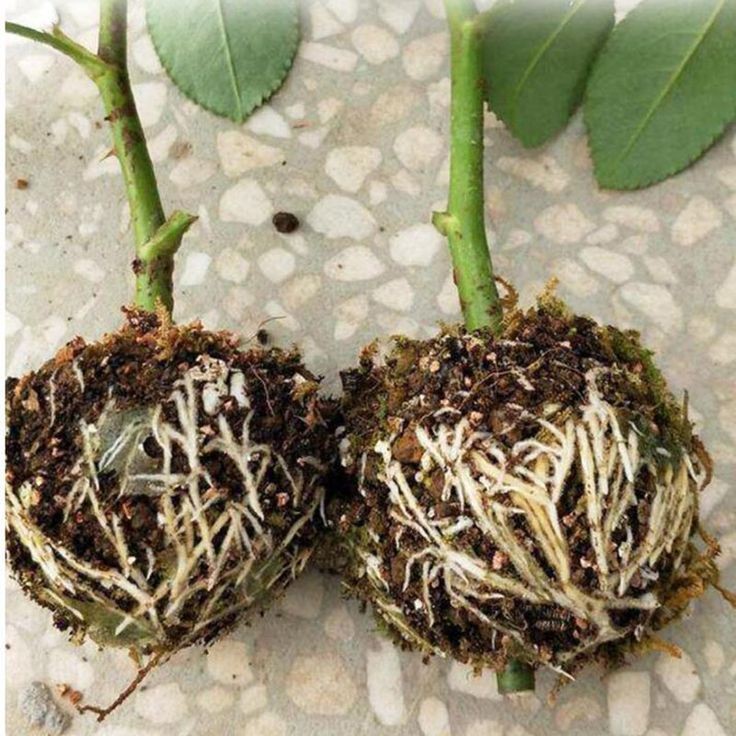
(3) Wait for a few weeks to allow the plant to root. You may remove the grafting box at the same time you also remove the wrap around the graft.
Is it possible to cross-breed monocots and dicots?
Monocots and dicots have different vascular systems and growth habits. So, it is not possible to graft a dicot plant to a monocot plant. Monocots also don’t have cambium which can regenerate new plant tissues.
However, since there’s still a lot of mystery in the field of science and everything can change at any given moment, let’s not close the possibility that it can happen. We just haven’t found plant species that can do it.
Final Thoughts
Roses are dicots with dicotyledon signs found in their leaves, flowers, and roots. They can be easily grafted that’s why some rose lovers are able to grow multi-colored roses. We also hope this post helped you learn the differences between monocots and dicots.
For sure, you’ll start checking the plants you have at home and identify them based on the indications you found here. Learning the classification of flowering plants also levels up your gardening mastery and makes you more efficient in taking care of your garden.
How many monocots and dicots do you have at home? Are you planning on crossing different rose varieties? Let us know in the comments below!
Also, please don’t forget to share this post with your friends so you can both geek out about your love for plants.
